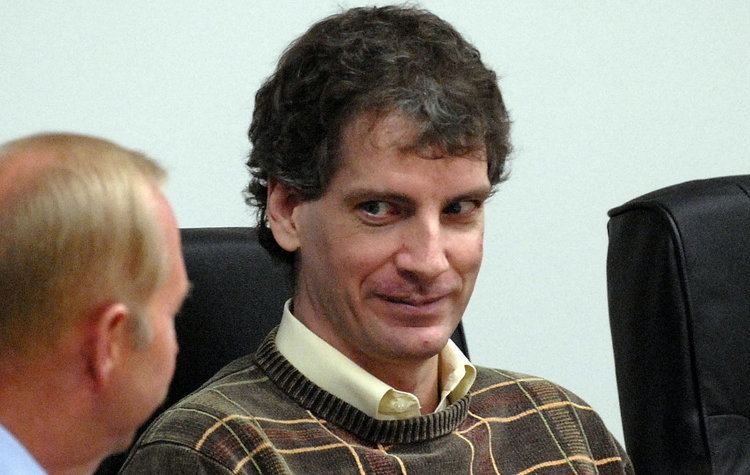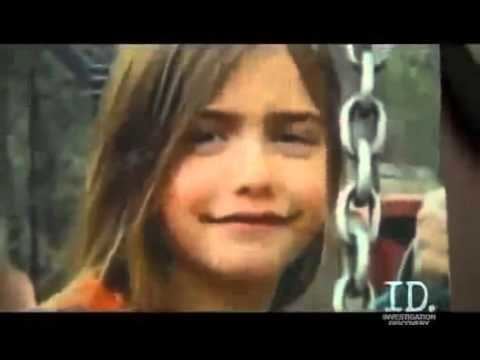Country United States Date apprehended July 2, 2005 | Role Serial Killer Name Joseph Duncan | |
 | ||
Born February 25, 1963 (age 62) ( 1963-02-25 ) Tacoma, Washington, United States Victims 5; confessed to an additional 2 Span of killings 1997–2005 (confessed to two murders in 1996) Education North Dakota State University | ||
Criminal penalty Capital punishment | ||
Joseph Edward Duncan III (born February 25, 1963) is an American convicted serial killer and sex offender who is on death row in federal prison in conjunction with the 2005 kidnappings and murders of members of the Groene family of Coeur d'Alene, Idaho. He is also serving 11 consecutive sentences of life without parole in conjunction with the same crimes as well as the 1997 murder of Anthony Martinez of Beaumont, California. Duncan has confessed to but not been charged with the 1996 murder of two girls in Seattle.
Contents
- Early criminal history
- Idaho murders and kidnappings
- Shasta Groenes interview
- Other crimes
- Anthony Martinez
- Sammiejo White and Carmen Cubias
- Trials
- Idaho
- Federal
- California
- The Fifth Nail and Fifth Nail Revelations
- References

Born in Tacoma, Washington, Duncan's criminal history dates to when he was 15 years old. In 1980, he was sentenced to 20 years in prison for sexually assaulting a boy in Tacoma and as a result has spent all but six years of his adult life in prison. He was paroled in 1994 but was returned to prison in 1997 for violating the terms of his parole.

In May 2005, Kootenai County, Idaho, authorities discovered the bodies of Brenda Groene, her boyfriend, and her 13-year-old son in the family home near Coeur d'Alene. Authorities also noted that Groene's two other children were missing: Shasta, 8, and Dylan, 9. After an intense search for the two children, Shasta was found alive with Duncan at a restaurant in Coeur d'Alene nearly seven weeks later, and Duncan was arrested in conjunction with her kidnapping. Dylan's remains were found days later in a remote area near St. Regis, Montana. Duncan was subsequently charged with murdering Dylan as well as the three victims at the Coeur d'Alene home.
During his incarceration, authorities connected Duncan with the unsolved murders of Anthony Martinez in California and two girls in Seattle, all of which occurred during Duncan's parole from 1994–1997. Of those murders, Duncan has only been charged in the California case. In all, Duncan has been convicted in Idaho for kidnapping and murdering the three victims in Coeur d'Alene, for which he was given six life sentences; in federal court for kidnapping Shasta and Dylan Groene and murdering Dylan, for which he was given three death sentences and three life sentences; and in the state of California for kidnapping and murdering Martinez, for which he was given two life sentences.

Early criminal history

Duncan has a long history as a violent sexual predator. He committed his first recorded sex crime in 1978 in his hometown of Tacoma, Washington, when he was 15 years old. In that incident, he raped a nine-year-old boy at gunpoint. The following year, he was arrested driving a stolen car. He was sentenced as a juvenile and sent to Dyslin's Boys' ranch in Tacoma, where he told a therapist who was assigned to his case that he had bound and sexually assaulted six boys, according to a report by the Associated Press. He also told the therapist that he estimated that he had raped 13 younger boys by the time he was 16.

In 1980, also in Tacoma, Duncan stole a number of guns from a neighbor and then abducted a 14-year-old boy and sodomized him at gunpoint. Duncan was sentenced to 20 years in prison, but was released on parole in 1994 after serving 14 years. While out on parole, Duncan is known to have lived in several places in the Seattle area. He was arrested in 1996 for marijuana use and released on parole several weeks later with new restrictions. Authorities believe that during his parole Duncan murdered Sammiejo White and Carmen Cubias in Seattle in 1996 and Anthony Martinez in Riverside County, California in 1997; however, both those cases went cold and were not tied to Duncan until after his arrest in the Groene case. Duncan was arrested in Kansas and returned to prison in 1997 after violating the terms of his parole; he was released from prison on July 14, 2000 with time off for good behavior and moved to Fargo, North Dakota.

In March 2005, Duncan was charged with the July 3, 2004 molestation of two boys at a playground in Detroit Lakes, Minnesota. On April 5, 2005, he appeared before a Becker County judge, who set bail at US$15,000. A Fargo businessman with whom Duncan had become acquainted helped him post bail; however, Duncan skipped bail and disappeared. On June 1, 2005, a federal warrant was issued for Duncan's arrest on the charge of "unlawful flight to avoid prosecution."
Idaho murders and kidnappings
On May 16, 2005, authorities discovered the bodies of Brenda Groene, 40; her boyfriend, Mark McKenzie, 37; and her son, Slade Groene, 13, in their home along Lake Coeur d'Alene, outside the city of Coeur d'Alene. Two of Brenda Groene's other children, Dylan, 9, and Shasta, 8, were missing. An AMBER Alert was issued and searchers combed the area for the missing children while authorities investigated the deaths at the home as homicides. Autopsies determined the cause of death to be "blunt trauma to the head"; authorities also noted that the victims had been bound.
Seven weeks later, in the early morning hours of July 2, 2005, Shasta Groene was seen at a Denny's restaurant in Coeur d'Alene in the company of an unknown man. A waitress, manager, and two customers at the restaurant recognized Shasta from media reports. They surreptitiously called police and positioned themselves to prevent the man from leaving. Police officers arrived at the restaurant and arrested the man, later identified as Duncan, without incident. Shasta Groene identified herself to a waitress at the restaurant and to authorities, and was taken to Kootenai Medical Center for medical treatment and to be reunited with her father. Coeur d'Alene police, meanwhile, detained Duncan on kidnapping charges and on his outstanding federal warrant.
When Shasta Groene was found without Dylan, authorities held little hope of finding the boy alive. Police asked the public for tips, specifically with respect to sightings of the stolen red Jeep Cherokee with Missouri license plates that Duncan was driving at the time of his arrest. Authorities discovered that Duncan had rented the car in Minnesota and never returned it. A gas station employee in Kellogg, about 40 miles (64 km) east of Coeur d'Alene, recognized the vehicle as one that had stopped at her station hours before Duncan was arrested. The employee suspected the girl wandering around the station might have been Shasta, but did not confront her, as nothing appeared out of the ordinary. The employee and her manager notified authorities after reviewing surveillance camera footage and seeing Duncan and Shasta in the video.
Many tips provided to authorities centered around remote areas along the Idaho–Montana border. On July 4, 2005, investigators found human remains at a remote makeshift campsite in the Lolo National Forest near St. Regis, Montana. The remains were sent to the FBI lab in Quantico, Virginia for DNA testing and were positively identified as Dylan Groene.
Shasta Groene's interview
Much of what is known about the murders of the Groene family was revealed by Shasta Groene herself. According to Shasta Groene's police interview, Duncan killed her mother, older brother and her mother's fiance and then took her and her brother away in the red Jeep Cherokee.
Shasta told investigators her mother called her into the living room, from her bedroom where she had been sleeping, and she saw Duncan wearing black gloves and holding a gun. Her captor tied her mother's hands with nylon zip ties, and did the same to her mother's fiance and her brother Slade. Dylan and Shasta were removed from the house and placed inside the stolen rental car. While she waited with her brother, she heard her mother's fiance scream out and then saw her injured older brother staggering away from the entrance to the home. Duncan then bludgeoned the three to death; neither Shasta nor Dylan witnessed the murders. Both Shasta and Dylan were removed to other locations, where they were repeatedly molested for six weeks. She said that they drove a long distance and stayed in two different campsites, where Duncan told her of having beaten her family members to death with a hammer.
Other crimes
Duncan's arrest led the FBI to launch a nationwide review of unsolved missing child cases. He was implicated as a possible suspect in several crimes that occurred between 1994 and 1997, when he was on parole, and between 2000 and 2005, when he was free from prison. Although he was cleared as a suspect in some cases, authorities in California and Washington had enough evidence to believe Duncan had committed unsolved murders in their jurisdictions.
Anthony Martinez
On April 4, 1997, 10-year-old Anthony Michael Martinez was playing with friends in the front yard of his home in Beaumont, California, when an unknown man approached the group asking for help finding a missing cat. When the boys refused, the man grabbed Martinez at knifepoint and threw him into his vehicle. After a two-week search, Martinez's body was found nude and partially decomposed in Indio, California, on April 19, 1997. Investigators noted that he had been sexually assaulted and bound with duct tape. Although a composite sketch of the suspect was made available and a partial fingerprint taken from the duct tape found on Martinez's body, the case eventually went cold.
In July 2005, bloggers noticed similarities between Duncan and the composite sketch in the Martinez case, as well as between Duncan's vehicle and the one Martinez's assailant was driving. The FBI and National Center for Missing and Exploited Children became involved, and in turn contacted Riverside County authorities. Riverside authorities were able to match the fingerprint taken from Martinez's body to Duncan, and on August 3 the Riverside County Sheriff officially announced Duncan's connection with the Martinez case.
Sammiejo White and Carmen Cubias
Federal prosecutors also revealed that Duncan confessed to the murders of Sammiejo White, 11, and her sister, Carmen Cubias, 9, who vanished on July 6, 1996, after leaving the Crest Motel in Seattle to panhandle. Their remains were found on February 10, 1998, in Bothell, Washington.
Trials
Duncan has been convicted by three courts, namely: an Idaho district court, for the kidnapping and murders of Brenda and Slade Groene and Mark McKenzie; the United States District Court for the District of Idaho, for the kidnapping of Shasta and Dylan Groene, the murder of Dylan Groene, and other crimes; and a California superior court, for the kidnapping and murder of Anthony Martinez.
Idaho
Duncan first appeared in a Kootenai County court on July 13, 2005, where he was charged with three counts of first-degree murder and three counts of first degree kidnapping, all in conjunction with the deaths of Brenda and Slade Groene and Mark McKenzie. Kootenai County prosecutors had initially planned to charge Duncan with the kidnappings of Shasta and Dylan Groene; however, they deferred those charges to the federal courts, as transporting children across state lines for the purpose of sexual exploitation is a federal offense. Trial was set to begin on January 17, 2006, but was delayed until April 4, after the district judge granted a request to the defense for more time to prepare for the trial, and then again to October 26, after the judge in the case stated that "No one wants to try this case twice, including me." Duncan's attorneys blamed the multiple postponements on the prosecution's insistence on pursuing the death penalty.
On October 16, 2006, shortly after jury selection began, Kootenai County prosecutors and Duncan's attorney reached a plea bargain in which Duncan pleaded guilty to all state charges against him. He was immediately sentenced to three consecutive life sentences without the possibility of parole for the three kidnapping charges. Sentencing on the three murder charges was continued pending the outcome of his federal trial on kidnapping and murder charges; the judge said that if he did not receive the death penalty on the federal charges, he would return to Kootenai County for a death penalty phase on the state murder charges. Over two years later, after being sentenced to death on federal charges, Kootenai County sentenced Duncan to three additional life sentences. Duncan also agreed to cooperate with Kootenai County sheriff's detectives investigating his crimes and provide passwords to encrypted files stored on his computer.
Federal
On January 18, 2007, Duncan was indicted by a federal grand jury in Coeur d'Alene on 10 counts of "kidnapping, kidnapping resulting in death, aggravated sexual abuse of a minor, and sexual exploitation of a child resulting in death," and other crimes related to illegal firearm possession and vehicle theft. He was arraigned the following day at a federal court in Boise, Idaho, where a judge ordered Duncan to stand trial the following March. Duncan's defense attorneys immediately requested a postponement, which was granted the week the trial was originally scheduled to begin; a new trial date was set for January 22, 2008.
On December 3, 2007, Duncan plead guilty to all 10 charges against him. As a condition of the agreement, Shasta Groene would not have to testify in the penalty phase of the trial. Due to a gag order, other details of the plea agreement were not released.
Jury selection for the penalty phase for Duncan's federal trial began on April 14, 2008. During jury selection, Duncan dismissed his attorneys and chose to represent himself. His attorneys objected, asserting he was not competent to do so, and requested a formal hearing as to the issue. The district court ordered an evaluation of Duncan to determine his competence, and accepted the evaluator's conclusion that he was competent to proceed without counsel.
On August 27, 2008, after three hours of deliberation, the jury recommended the death penalty, and the judge imposed three death sentences for "kidnapping resulting in death, sexual exploitation of a child resulting in death, and use of a firearm in a violent crime resulting in death," all related to the death of Dylan Groene. On November 3, 2008, Duncan was sentenced to an additional three consecutive terms of life without parole in federal prison for kidnapping Shasta Groene and for sexually abusing Shasta and Dylan.
Duncan's standby counsel filed a notice of appeal. Duncan subsequently wrote the court and informed it that any appeal was taken "against his wishes".
In July 2011, the Ninth Circuit Court of Appeals reversed the district court's decision to permit Duncan to represent himself without first holding a hearing as to his competence to do so and remanded for a hearing as to this issue.
As of May 18, 2012, on remand, the district court had not set a competency hearing. As of September 2012, Duncan is incarcerated at the United States Penitentiary, Terre Haute in Indiana.
California
On January 18, 2007, the same day Duncan was indicted in federal court, Riverside County officials announced that Duncan was charged with Martinez's murder. Despite attempts by Riverside County officials to extradite Duncan to California, including an appeal by Governor Arnold Schwarzenegger, Duncan's federal trial proceeded. He was eventually extradited to California on January 24, 2009, five months after being sentenced to death by the federal court.
On March 15, 2011, Duncan pleaded guilty to Martinez's murder, and was sentenced to two life terms on April 5, 2011. As part of a plea deal, the sentence comes without the possibility of parole or right to appeal. Although Duncan could have faced a separate death sentence in addition to the ones he had already been sentenced to in federal court, Riverside County District Attorney Paul Zellerbach justified the life sentence by stating that he had consulted with the Martinez family who wanted closure in the case and that "the federal system will kill him long before the state of California would have seriously considered it."
"The Fifth Nail" and "Fifth Nail Revelations"
Prior to his arrest for murder, Duncan published his ideas on the Internet. He titled it "The Fifth Nail", which is also the URL for his personal website. According to lore, in addition to the four nails used to pierce the body of Jesus Christ in his crucifixion, there was a fifth nail that was taken away and hidden by the Romans. Duncan adopted the name for his own website and blog. The website depicted Duncan's day-to-day life as a sex offender. In the blog, he denied being a pedophile, and claimed to have been sexually abused as a child.
